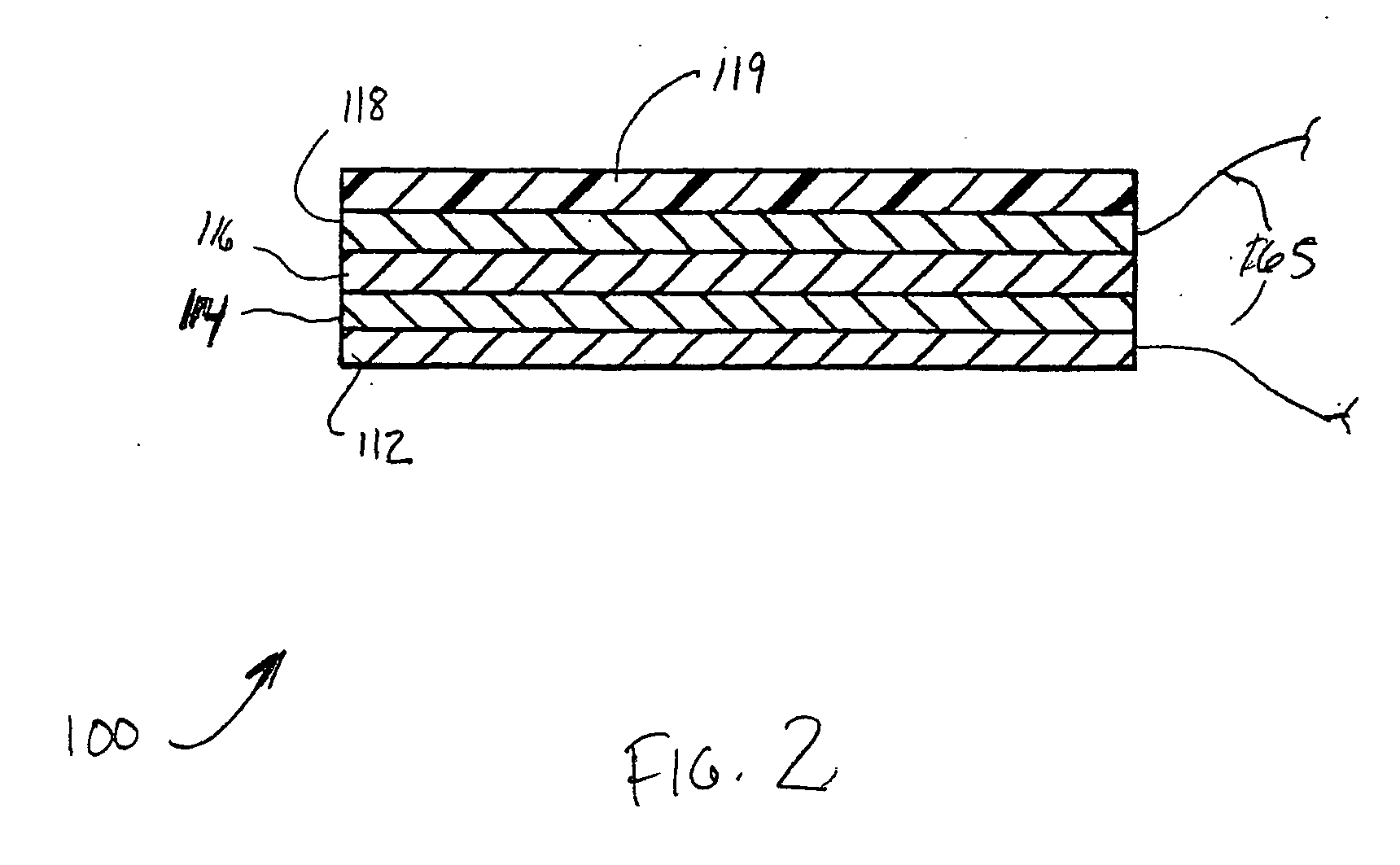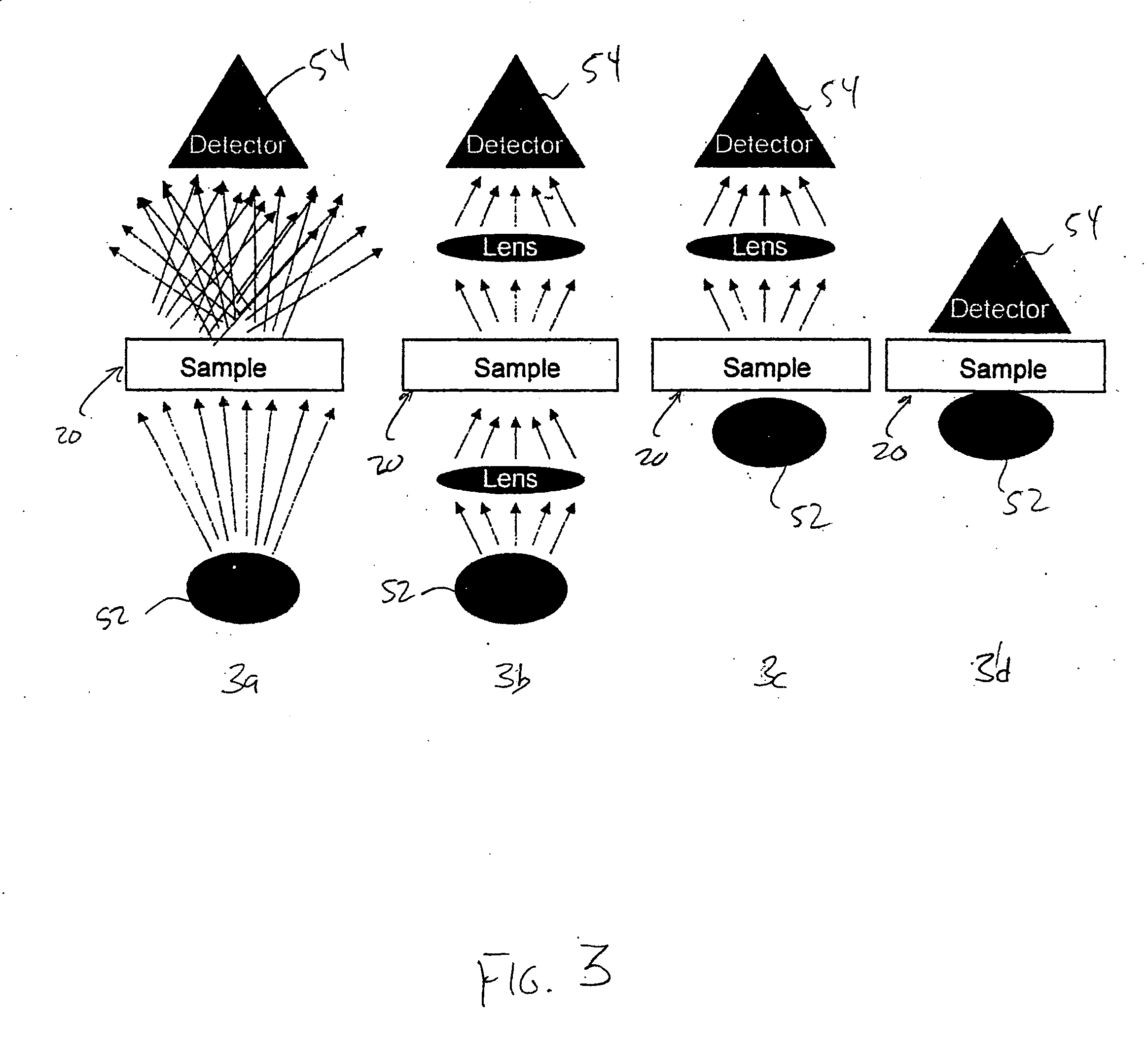Transmission-based luminescent detection systems
a luminescent detection and transmission technology, applied in the field of transmission-based luminescent detection systems, can solve the problems of increasing background interference, non-portable, expensive, etc., and achieve the effect of improving background interference, reducing the cost of operation, and improving the efficiency of operation
- Summary
- Abstract
- Description
- Claims
- Application Information
AI Technical Summary
Benefits of technology
Problems solved by technology
Method used
Image
Examples
example 1
[0101] The ability to form a luminescent detection system in accordance with the present invention was demonstrated. Luminescent detection probes were initially formed for use in the optical detection system. Specifically, 2.4 milligrams of an epoxy-functional terpolymer resin (Dow Chemical Co. of Midland, Mich. under the name UCAR™ VERR-40); 0.6 milligrams of a vinyl resin (available from Dow Chemical under the name UCAR™ VMCA); and 30 micrograms of platinum (II) tetra-meso-fluorophenylphorphine (Pt-TMFPP) (Frontier Scientific Inc. of Logan, Utah) were dissolved into 0.6 milliliters of tetrahydrofuran. 3 milliliters of water was then added to the mixture under vigorous stirring through a syringe pump with a delivery rate of 7 milliliters per minute. The particles were dialyzed three times in water to remove the tetrahydrofuran. Next, the particles were suspended in water to form a suspension (2 milligrams per milliliter) and heated at 80° C. for 3 hours to crosslink the particles. ...
example 2
[0108] The ability to form a luminescent detection system in accordance with the present invention was demonstrated. Luminescent detection probes were initially formed for use in the optical detection system. Specifically, 2.4 milligrams of an epoxy-functional terpolymer resin (Dow Chemical Co. of Midland, Mich. under the name UCAR™ VERR-40); 0.6 milligrams of a vinyl resin (available from Dow Chemical under the name UCAR™ VMCA); and 30 micrograms of palladium (II) tetra-meso-fluorophenylporphine (Pd-TMFPP) (Frontier Scientific Inc. of Logan, Utah) were dissolved into 0.6 milliliters of tetrahydrofuran. 3 milliliters of water was then added to the mixture under vigorous stirring through a syringe pump with a delivery rate of 7 milliliters per minute. The particles were dialyzed three times in water to remove the tetrahydrofuran. Next, the particles were suspended in water to form a suspension (2 milligrams per milliliter) and heated at 80° C. for 3 hours to crosslink the particles. ...
example 3
[0111] A luminescent detection system was formed as described in Example 1, except that seven sets of sample strips were formed. Each strip was dipped into a well containing 40 microliters of hepes buffer (20 millimolar, pH 7.4) and Tween 20 (0.5%, Aldrich). In addition, different amounts of phosphorescent Pt-TMFPP particles were provided in each well, namely, 0, 0.62,1.3, 2.5, 5.0,10.0 and 20.0 nanograms. 10 duplicates were performed for each set of strips. Table 1 shows the average phosphorescence signal at a 40-microsecond delayed time for each series and its standard deviation.
TABLE 1Phosphorescence ResultsSample Set1234567Amount (ng) 0.0 0.6121.252.505.0010.020.0I40-I200−9.1E−4−4.6E−46.9E−40.00240.0050 0.013 0.028Standard Deviation 8.2E−4 7.4E−40.00110.00110.0011 0.0010 0.0032
Note:
I40 and I200 are the phosphorescence intensities at a 40- and 200-microsecond delayed time, respectively.
[0112] Likewise, FIG. 14 shows the dose response curve at a 40-microsecond time delay corre...
PUM
| Property | Measurement | Unit |
|---|---|---|
| time | aaaaa | aaaaa |
| time | aaaaa | aaaaa |
| length | aaaaa | aaaaa |
Abstract
Description
Claims
Application Information
 Login to View More
Login to View More - R&D
- Intellectual Property
- Life Sciences
- Materials
- Tech Scout
- Unparalleled Data Quality
- Higher Quality Content
- 60% Fewer Hallucinations
Browse by: Latest US Patents, China's latest patents, Technical Efficacy Thesaurus, Application Domain, Technology Topic, Popular Technical Reports.
© 2025 PatSnap. All rights reserved.Legal|Privacy policy|Modern Slavery Act Transparency Statement|Sitemap|About US| Contact US: help@patsnap.com



